Everyone has preferences when it comes to their vehicles. From the look to the performance, everyone wants something different out of their car or truck.
One of those common preferences is the size of the tires, and more specifically, the size of the wheels on which the tires would be installed. It has long been popular among car and truck enthusiasts to experiment with the size of their wheels. Not only does that change the look of the vehicle — which is what many drivers who opt for the change are going for — but changing the size of the wheel can also make a difference in the style and the feel of the drive.
For those who make those changes, the difference in style, feel, and look are benefits. But there is the possibility of issues arising if an ill-fitting set of wheels is put on the wrong vehicle. For that reason, it’s essential that drivers understand what goes into selecting a wheel for their car or their truck.
Let’s dive into the specifics of how the pros determine which wheels fit on which vehicles and, since it’s often done by amateur car enthusiasts, what issues might arise if done incorrectly.
How Do You Know What Size Wheels Fit on My Car?
When determining the correct size of wheels for any vehicle, it’s essential to find what is called the proper “fitment.” There are several factors that go into finding the right fitment for every wheel and vehicle.
Those factors ensure the ability to mount the wheel as well as proper clearance in relation to the suspension. They include (among many other considerations) bolt patterns, offset, and of course, the size and type of wheel.
Bolt Pattern
Starting with the bolt pattern, it’s important to determine a wheel will be properly mounted onto the vehicle. A bolt pattern is comprised of two parts: the number of lugs and the centerline measurement between them. Wheels and vehicles come with different bolt patterns, some with four, five, six, or eight lugs. Depending on the size, they also have different measurements. If there are five lugs, or wheel studs, measure from the center of one lug to the outside of the farthest lug. If there are four, six, or eight, measure from the center of one straight across to the center of the opposite lug.
If a wheel has a bolt pattern of 4×110, then that means there are four lugs, and the centerline measurement between them is 110 mm.
Wheel Offset
Because many drivers opting for different wheel sizes are doing so for either the look or performance, the offset is an important factor in achieving your desired effect. Wheel offset is the difference between the mounting point and the centerline of the wheel, and is usually referred to as a negative offset or a positive offset.
If a wheel has a positive offset, it will likely sit more inside the wheel well. The opposite is true for wheels with negative offset, which extend further away from the vehicle.
Backspacing is another consideration that often coincides with the offset. It refers to the measurement from the mounting point to the back of the wheel. It’s important to have the right balance of offset and backspacing to avoid any clearance issues.
Sizing
It’s common for drivers wanting to change their wheels to opt for larger sizes, which is generally called “plus sizing.” While boosting the size of your wheel is certainly possible, it’s important to ensure the tire you fit onto the wheel has a low enough profile so you can maintain the same total stock diameter that has been defined as safe for your vehicle.
Issues With Ill-Fitted Wheels
As with any change to your vehicle, it is essential to do your research and prepare before making those decisions. As mentioned in the considerations above, there are plenty of issues that could arise if they are not handled properly. For one, we mentioned clearance issues, whether that is with the fender or with brake pads or other parts. You might also encounter some vibrations or rubbing, which put a strain on the wheels and the vehicle.
In general, you can sometimes expect a change in the way your drive feels, even when done correctly. Larger wheels can give some adventure and offer a sportier experience but might also cause a little less comfort on the ride. For some drivers, that’s the point! For others, it’s good to keep in mind before making the call to change your wheel set-up.
Call the Pros
While there are certainly a variety of factors to consider when changing the size of your wheels, you don’t have to do it alone!
Call the mobile tire professionals at Tread Connection to guide you through the process, from education such as our tire size calculator guide to an in-person consultation.

